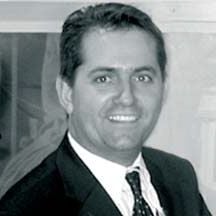HealthManagement, Volume 5 / Issue 5 / 2010
Dear Reader,
We are all creatures of today, carrying the legacy of yesterday and the vision of our tomorrows. The term 'Megatrend' would then be the red rope which binds the chronology of our lives and all that happens within.
Recent years have seen an increase in the already massive attention given to healthcare. In the Western world at least, healthcare is largest sector for spending – yes, higher than even the military, and in most cases, rising faster than the latter. It is, therefore, hardly surprising that a clutch of experts have sought to decipher long-term trends – Megatrends – to get a glimpse of realms beyond.
How healthcare will look in the Year 2020's or even 2050 was the subject of a Harvard Business Review feature earlier this year. Other experts, too, have made similar efforts and, on our part, we found a surprising level of commonality in their views. In the face of this, our Cover Story makes a selection of what we see as the Top 10 Megatrends in Healthcare. For the sake of convenience, we broke these up into three broad groups. We then sought to look in our own rearview mirrors, and assess what we at Healthcare IT Management have had to say about them over the past 3-4 years.
This issue also highlights another unfolding saga, about the ambitious healthcare reforms underway in the US Healthcare reform, readers may recall, was a pillar of President Obama's vision during his electoral campaign, and soon after, acquired legal and financial substance in the American Recovery and Reinvestment Act (ARRA) 2009.
As Mr. Obama crosses the midpoint of his presidential term, we believe it opportune to revisit ARRA. Based on its track record so far, ARRA may not meet its key goal - « widespread use » of electronic health records (EHRs) - by the year 2014. However, it has begun to make its presence felt in the US, and backed by no less than 26 billion dollars in healthcare IT outlays, such an impact will inevitably grow.
One of the key challenges for ARRA is something familiar to Europeans: whether to implement new and (yet) untested technology, or be locked into available technology – and limit the ability to benefit from innovative solutions that arise in the coming years. We provide an overview of this debate.
We also make an appraisal of one omnipresent but ever-vexing undercurrent in the healthcare IT debate, namely security.
This challenge is highlighted by an industry expert in the feature 'Promoting Patient Data Safety with No Headaches'. For the author, "it is not good enough to have an excellent security policy if you cannot assure patients and the regulators that this is understood and applied by everyone, everywhere, all the time." The increased automation of security procedures may be one plank, he believes, for a meaningful solution, not least because this can provide "very concrete" returns for healthcare IT organisations.
Another feature on the same theme, written by the inventor of a mobile security solution, notes the ubiquitousness of smart phones and personal digital assistants (PDA) as well as the plethora of programmes that can now be instantly downloaded to these devices – along with unending updates. This, in the author's view, presents an ever-growing threat to security, and patient data privacy. Though there are no simple solutions, standards and certification plus robust organisational practices may offer a way out. Meanwhile, one common excuse – the 'ignorance' of non-technical users – is becoming out-of-date; increasingly, experts too are victims of hackers and phishers.
This issue of Healthcare IT Management is the final one for 2010. We wish all our readers a happy season of festivities and count on your support and participation for the forthcoming IT @ Networking Award in January 2011.

Christian Marolt
Secretary General and Editor-in-Chief, HITM


















